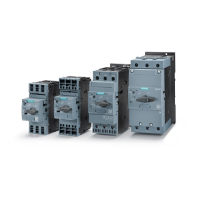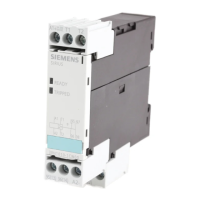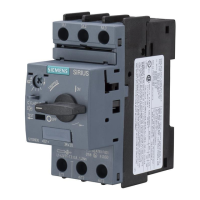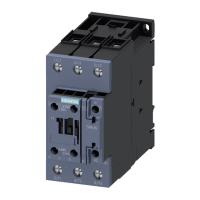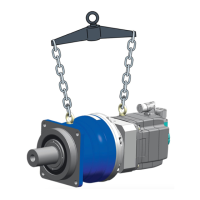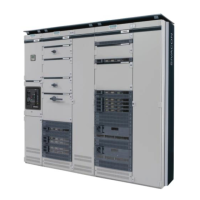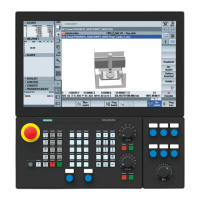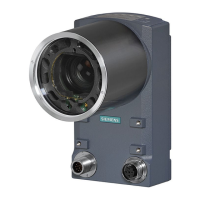SIRIUS 3RT2 contactors/contactor assemblies
2.4 Configuration
SIRIUS Innovations
126 System Manual, 01/2011, A8E56203870002-03
2.4.7 Switching in the auxiliary circuit
Applications
The 3RH2 contactor relays can be used for switching in the auxiliary circuit (controlling,
signaling, interlocking).
Contactor relays must meet particular requirements by featuring clear terminal designations
and time- and cost-saving connection systems; the SIRIUS 3RH2 contactor relays (size S00)
fulfill all these demands.
Thanks to their high contact reliability at low voltages and currents, the 3RH2 contactor
relays are suitable for solid-state circuits down to a lower limit of 1 mA at 17 V.
Versions
3RH2 contactor relays are available in size S00 and can be ordered with AC or DC drives.
The external design of the 4-pole 3RH21 contactor relay is identical to that of the motor
contactor in size S00 (45 mm width). In addition, 8-pole 3RH22 contactor relays can be
supplied with a permanently mounted auxiliary switch block on the front.
Rated powers
The performance range of the 4-pole 3RH21 contactor relays in size S00 extends up to 10 A
at a voltage of up to 230 V in utilization category AC-15/AC-14 and up to 6 A at 24 V DC in
utilization category DC-12/DC-13.
Auxiliary switch blocks
The 3RH2 contactor relays can be expanded by up to 4 contacts via attachable auxiliary
switch blocks. The lateral auxiliary switches cannot be used for contactor relays.
Special version: 3RH24 latched contactor relays
In the event of a short circuit in the low-voltage system or if large drive motors are switched
on directly, the control supply voltage for the contactor relays may drop out or fall below the
permissible tolerance for a brief period. To guarantee continued operation, the
3RH24 special version of the contactor relays, with mechanical latching, may be used.
These contactor relays latch mechanically following switch-on and then remain switched on
even if there is a voltage failure. The contactor relay can be released either electrically by
means of a release solenoid, or manually via a button on the front of the attached latch.
When the voltage is recovered, the storage properties of the contactor relays mean that the
production program can be resumed straightaway without any resetting time. The contactor
coil and the coil of the release solenoid are both dimensioned for continuous operation. The
power input is the same for the contactor coil and the release coil. The number of auxiliary
contacts can be extended by means of auxiliary switch blocks on the front (up to 4 poles).

